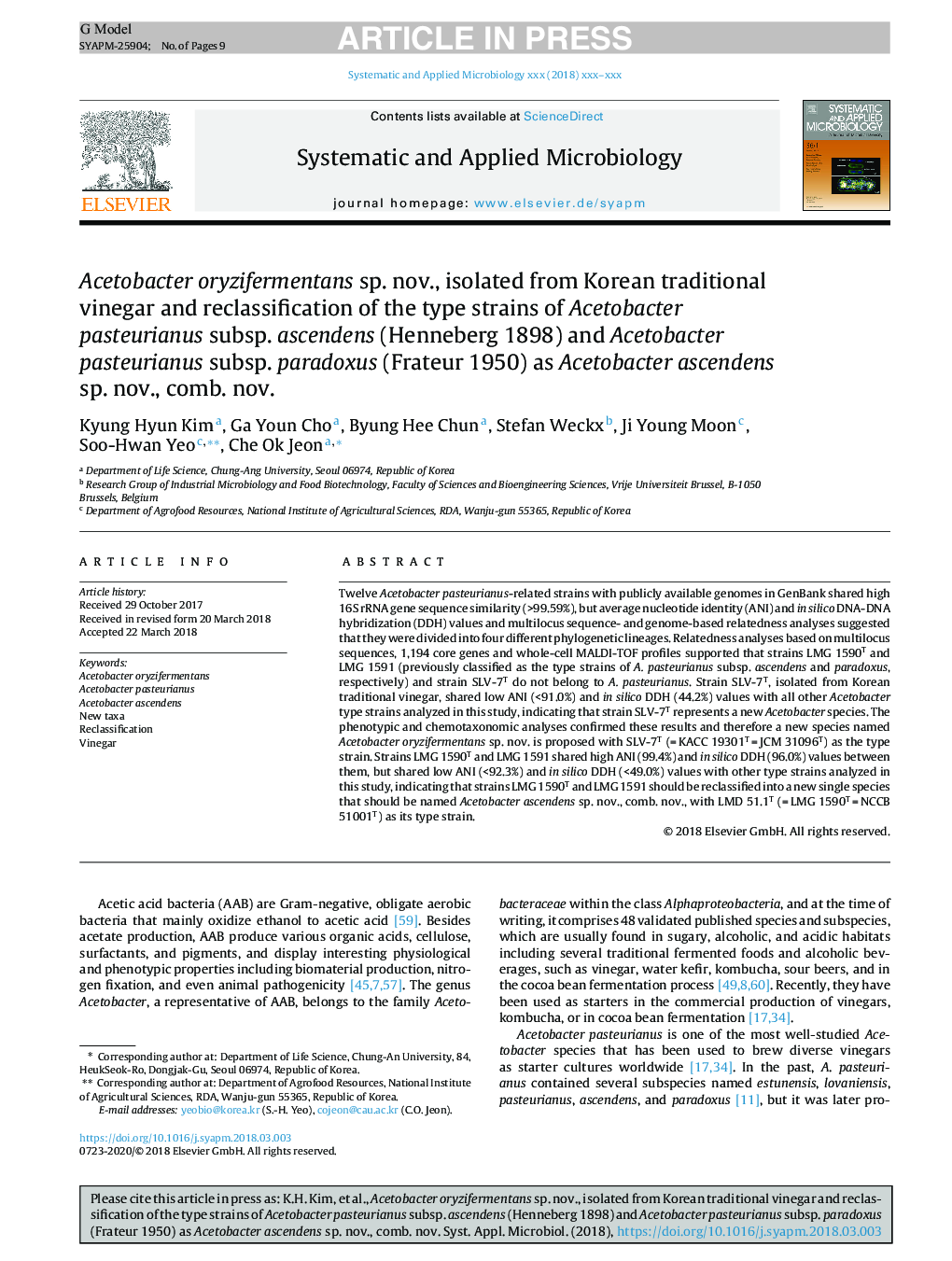| Article ID | Journal | Published Year | Pages | File Type |
|---|---|---|---|---|
| 8393299 | Systematic and Applied Microbiology | 2018 | 9 Pages |
Abstract
Twelve Acetobacter pasteurianus-related strains with publicly available genomes in GenBank shared high 16S rRNA gene sequence similarity (>99.59%), but average nucleotide identity (ANI) and in silico DNA-DNA hybridization (DDH) values and multilocus sequence- and genome-based relatedness analyses suggested that they were divided into four different phylogenetic lineages. Relatedness analyses based on multilocus sequences, 1,194 core genes and whole-cell MALDI-TOF profiles supported that strains LMG 1590T and LMG 1591 (previously classified as the type strains of A. pasteurianus subsp. ascendens and paradoxus, respectively) and strain SLV-7T do not belong to A. pasteurianus. Strain SLV-7T, isolated from Korean traditional vinegar, shared low ANI (<91.0%) and in silico DDH (44.2%) values with all other Acetobacter type strains analyzed in this study, indicating that strain SLV-7T represents a new Acetobacter species. The phenotypic and chemotaxonomic analyses confirmed these results and therefore a new species named Acetobacter oryzifermentans sp. nov. is proposed with SLV-7T (=Â KACC 19301TÂ =Â JCM 31096T) as the type strain. Strains LMG 1590T and LMG 1591 shared high ANI (99.4%) and in silico DDH (96.0%) values between them, but shared low ANI (<92.3%) and in silico DDH (<49.0%) values with other type strains analyzed in this study, indicating that strains LMG 1590T and LMG 1591 should be reclassified into a new single species that should be named Acetobacter ascendens sp. nov., comb. nov., with LMD 51.1T (=Â LMG 1590TÂ =Â NCCB 51001T) as its type strain.
Related Topics
Life Sciences
Agricultural and Biological Sciences
Ecology, Evolution, Behavior and Systematics
Authors
Kyung Hyun Kim, Ga Youn Cho, Byung Hee Chun, Stefan Weckx, Ji Young Moon, Soo-Hwan Yeo, Che Ok Jeon,
